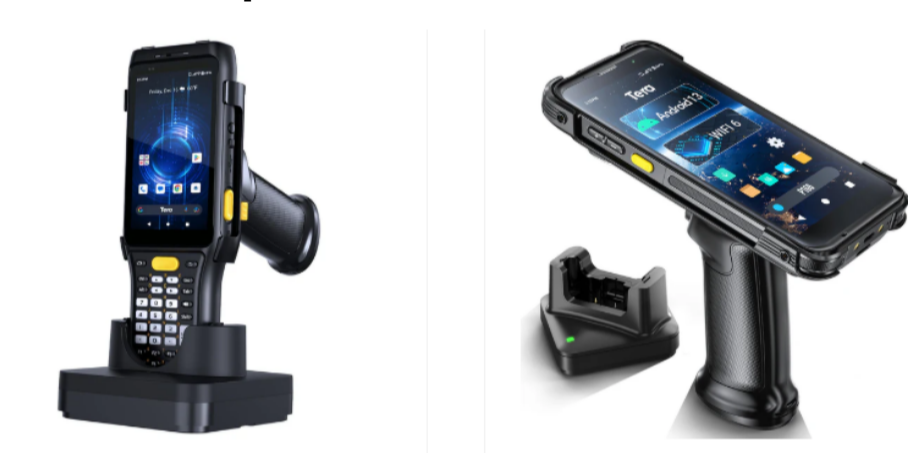Enhancing Warehouse Operations with Mobile Computer Scanners

In the modern logistics industry, efficiency is the foundation of competitiveness. As businesses strive to meet escalating customer demands for speed and accuracy, the role of technology in warehouse management has become indispensable. Mobile computer scanners have emerged as powerful tools, transforming traditional, labor-intensive workflows into streamlined, data-driven operations. By replacing manual pen-and-paper methods, these devices significantly reduce errors and boost productivity from receiving to dispatch.
The Core Functions of Mobile Scanners in Warehouse Management
Mobile computer scanners are more than just data capture devices; they are the central nervous system of a modern warehouse. They integrate seamlessly with a Warehouse Management System (WMS) to provide real-time control over every aspect of inventory and logistics.
Streamlining Inventory Management
Accurate inventory management is a critical function. Mobile scanners automate this process by enabling workers to instantly register incoming and outgoing goods. Using barcode or RFID technology, staff can scan items as they arrive or leave, and the WMS is updated automatically.
This automation eliminates the delays and potential inaccuracies of manual data entry. Furthermore, these devices allow for real-time inventory monitoring. Managers can track stock levels closely, receive alerts for low inventory, and prevent both costly backlogs and stockouts that disrupt the supply chain.
Accelerating Order Processing
The order fulfillment process is dramatically improved with mobile computer scanners. When an order is placed, warehouse staff can view all necessary details directly on their handheld device. This includes the product type, quantity, and precise storage location, guiding them efficiently through the picking process.
This accessibility to information allows workers to pick and pack goods with greater speed and accuracy, increasing the overall order processing rate. Many devices also support the instant printing of shipping orders and labels, further simplifying the distribution workflow and reducing turnaround times.
Providing Real-Time Cargo Tracking
A key advantage of mobile computer scanners is the transparency they bring to logistics operations. Connected to wireless networks, these devices upload information about the movement and status of goods in real time. This creates a complete tracking mechanism within the warehouse.
Managers can monitor the progress of orders at every stage, from shelf to shipping dock. This transparent flow of information not only improves internal decision-making but also enhances customer satisfaction by providing accurate updates on order status.
Read Also: The Future of Remote Work: Tech Tools That Make It Possible
Types of Mobile Scanning Devices for Different Needs
Warehouses utilize various types of scanners, each designed to optimize specific tasks and environments. Choosing the right form factor is essential for maximizing worker productivity and operational efficiency.
Handheld Mobile Computers
Handheld mobile computers are the versatile workhorses of the warehouse. These durable devices are designed for a wide range of applications, including receiving, put-away, price verification, and shipping. Their rugged construction ensures they can withstand the demanding conditions of an industrial setting.
Wearable Computers and Ring Scanners
For tasks that require frequent handling of items, wearable devices offer a significant productivity boost. Worn on the arm or wrist with a small ring scanner on the finger, these computers leave both of the user’s hands free. This is ideal for high-volume picking, sorting, and packing operations where efficiency is paramount.
Vehicle-Mounted Computers
Vehicle-mounted computers are installed directly onto forklifts and other material handling vehicles. These devices provide operators with constant access to the WMS while they are on the move. They are particularly effective for processes like replenishment and put-away, where workers need to confirm transactions from their vehicle.
Key Considerations for Selecting Warehouse Scanners
- Data Capture Capability: The primary function of a scanner is to capture data reliably. A quality device should be able to read both one-dimensional (1D) and two-dimensional (2D) barcodes quickly and accurately, even from a distance or when codes are damaged or poorly printed.
- Ruggedness and Ergonomics: Warehouse environments are harsh. Devices must be rugged enough to withstand drops onto concrete, exposure to dust and moisture, and extreme temperatures. At the same time, they should be lightweight and ergonomic to ensure comfort for users during long shifts.
- Connectivity: Seamless connectivity is crucial for real-time data transfer. The devices must support the latest Wi-Fi standards for a stable connection to the back-end network. Bluetooth support is also necessary for pairing with peripherals like mobile printers and other accessories.
- System Integration and Operating Systems: New devices must integrate smoothly with existing WMS and enterprise systems. Furthermore, the device’s operating system is a critical factor. Many businesses are migrating from older platforms to more modern, developer-friendly operating systems. This shift has made it easier to find versatile and powerful android barcode scanner that can be easily integrated into existing infrastructures and support a wide range of warehouse management applications.
By carefully integrating the right mobile computer scanners, businesses can unlock new levels of productivity and accuracy. These tools are fundamental to building a responsive, efficient, and competitive logistics operation prepared for the challenges of the modern market.





